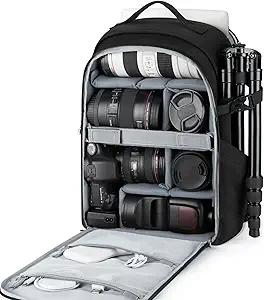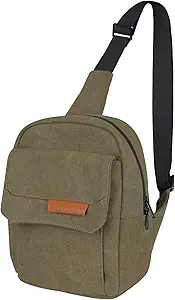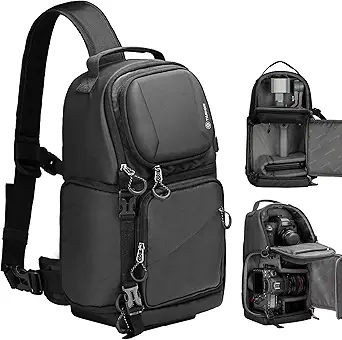A Comprehensive Guide to Buying the Perfect Camera Bag
Overview
A camera bag is an essential accessory for photographers who need to carry their equipment with them. It not only protects your camera and lenses but also provides easy access to them. With so many options available in the market, choosing the right camera bag can be overwhelming. This guide will help you understand the different types of camera bags, key considerations, features, prices, tips, and frequently asked questions to help you make an informed decision.
Types
1. Backpacks - These are the most popular type of camera bags, offering ample space for equipment and accessories. They have padded compartments to protect your gear and are comfortable to wear for extended periods.
2. Shoulder bags - These bags are ideal for photographers who need quick access to their equipment. They are compact and easy to carry, but can only hold a limited amount of gear.
3. Sling bags - These bags are a hybrid between backpacks and shoulder bags. They offer the convenience of quick access to your equipment and the comfort of a backpack.
4. Rolling bags - These bags are perfect for photographers who need to carry a lot of heavy equipment. They have wheels and a handle, making them easy to maneuver.
5. Holster bags - These are small bags that can hold a camera and one or two lenses. They are ideal for photographers who need to travel light.
Key Considerations
1. Size - Consider the size of your camera and lenses when choosing a camera bag. Make sure it can accommodate all your gear.
2. Comfort - Choose a bag that is comfortable to carry for extended periods.
3. Durability - Look for a bag that is made of high-quality materials and has reinforced stitching to ensure it lasts a long time.
4. Accessibility - Consider how easy it is to access your equipment from the bag.
5. Weather resistance - Look for a bag that is weather-resistant to protect your equipment from rain and other elements.
Features
1. Padded compartments - These compartments protect your gear from damage.
2. Adjustable dividers - These allow you to customize the interior of the bag to fit your equipment.
3. Tripod holder - Look for a bag that has a tripod holder if you plan on carrying a tripod.
4. Water-resistant material - This will protect your equipment from rain and water damage.
5. Multiple pockets - Look for a bag that has multiple pockets to store accessories like batteries, memory cards, and filters.
Prices
Camera bags can range from $20 to $500, depending on the type, size, and features. Backpacks and rolling bags tend to be more expensive, while shoulder bags and holsters are more affordable.
Tips
1. Choose a bag that fits your style of photography.
2. Consider the weight of the bag when empty, as it will add to the weight of your equipment.
3. Look for a bag with a warranty to ensure it lasts a long time.
4. Consider buying a bag that can double as a regular backpack or messenger bag.
5. Try the bag on before purchasing to ensure it fits comfortably.
FAQs
Q: Can I use a regular backpack as a camera bag?
A: Yes, you can, but it may not provide adequate protection for your equipment.
Q: Can I fit a laptop in a camera bag?
A: Some camera bags have dedicated laptop compartments, but not all do. Make sure to check the specifications before purchasing.
Q: How do I clean my camera bag?
A: Most camera bags can be cleaned with a damp cloth and mild soap. Make sure to follow the manufacturer's instructions.
Q: Can I carry my camera bag on a plane?
A: Yes, you can, but make sure to check the airline's carry-on restrictions beforehand.
Q: Do I need a camera bag if I only have one camera and lens?
A: A holster bag may be sufficient for a single camera and lens, but it's always best to protect your equipment with a dedicated camera bag.














